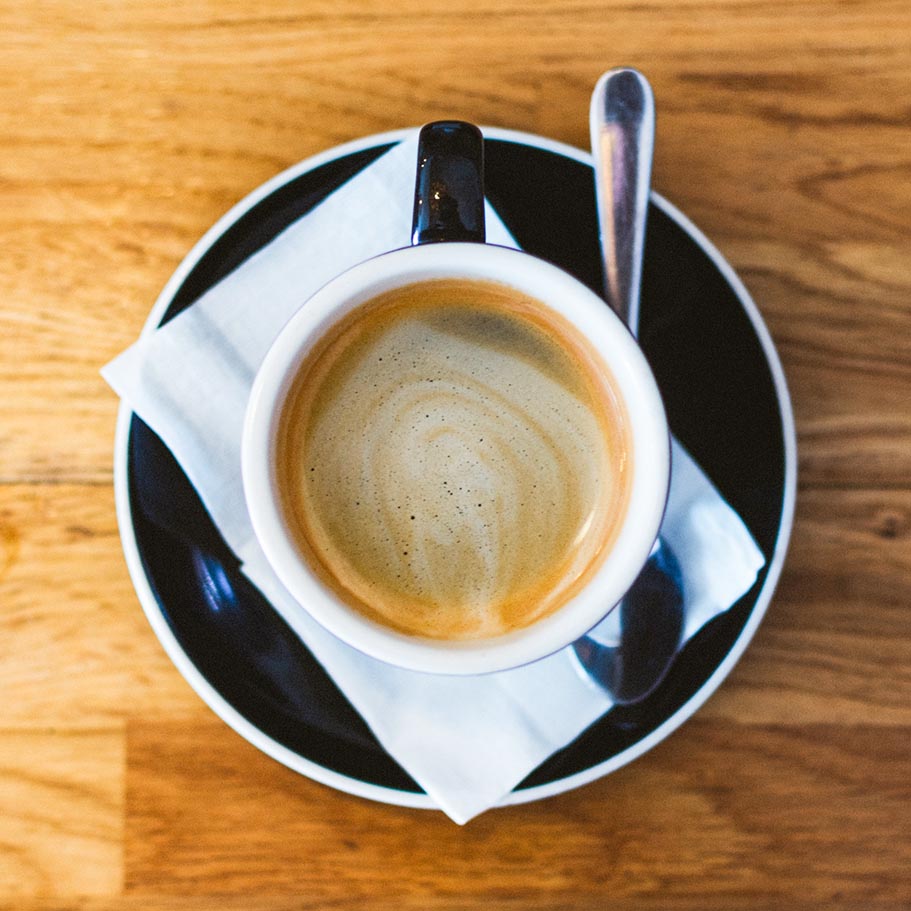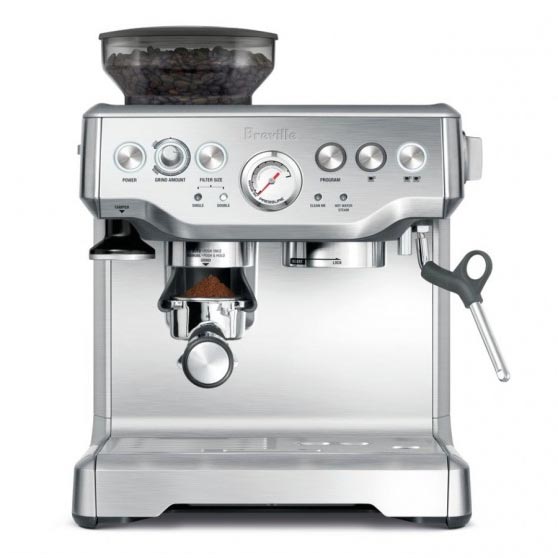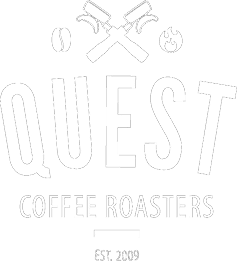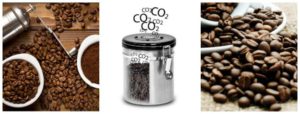The Quest Coffee Master’s guide to home brewing the perfect espresso, with everything you need to know about equipment, cost, beans, and full instructions on how to prepare and brew.
- What kind of coffee does an espresso make?
- What equipment do I need from home brewing espresso and how much will it cost?
- How difficult is it to make espresso?
- How long will it take to brew?
- What coffee should I use?
- Prepare your grinder
- Machine warm up
- Water and equipment
- Measure. Measure. Measure.
- Serving
- Q. WHAT GRIND SETTING SHOULD I USE TO MAKE ESPRESSO?
- Q. What is dosing?
- Q. What do ‘bars’ mean on the espresso machine?
Enjoying barista-style coffee in the comfort of your own home doesn’t have to cost you hundreds of dollars, it’s actually quite affordable. We’ll take you through everything you need to know about homebrewing using your espresso machine. With tips, tricks and knowledge directly from the baristas at our Quest Burleigh Cafe, through to our roasting team with over 10 years experience in the coffee industry.

What kind of coffee does an espresso make?
An espresso makes espresso style coffee which has a rich, full-bodied flavour that is strong in taste. We enjoy espresso because it’s pleasant to sip with a nice crema that is produced by the extraction process.
What equipment do I need from home brewing espresso and how much will it cost?
Brewing espresso at home starts from $200 and can go up to $4,000 for a fancier, more thorough setup. We’ve included the essentials you will need to brew espresso, along with some optional items.
Essential Equipment
| Name | Price | Buy from Quest or a recommended supplier | Notes |
|---|---|---|---|
| Single grouphead espresso machine with portafilter and basket | $200 – $4000+ At Quest Burleigh Cafe, we use a La Marzocco machine. Popular machines among Quest customers include DeLonghi La Specialista Pump Espresso Maker, and Breville Barista Express Manual Coffee Machine. There are plenty of options to choose from. You can read 17 of the best coffee machines for your home by ‘Homes to Love’ for more ideas. | – Machines from Alternative Brewing – Machines from Kitchen Warehouse – Machines from Barista Warehouse For wholesale equipment inquiries, use our wholesale contact form. | A single grouphead espresso machine is a great starting point for home brewers. It can pour up to two full shots at a single time, and requires less cleaning than machines used in cafes. A portafilter is needed for extracting the coffee while the basket that inserts into the portafilter holds ground coffee beans. |
| Coffee tamper | $14.95 – $50 | – Tampers from Alternative Brewing – Tampers from Kitchen Warehouse – Tampers from Barista Warehouse | Using a coffee tamper helps to pack the ground coffee into the basket, allowing for an even shot of coffee to be extracted. Some espresso machines include a coffee tamper. |
| Tea spoon | varies | Use your tea spoon to transfer ground coffee into the portafilter. | |
| Compost Bin | varies | Used coffee grinds are an excellent source of compost material. |

Optional Equipment
| Name | Price | Buy from Quest or a recommended supplier | Notes |
|---|---|---|---|
| Coffee grinder | $30 – $500+ | – Grinders from Alternative Brewing – Grinders from Kitchen Warehouse – Grinders from Barista Warehouse | Ranging in price, you can use hand or electric grinders, depending on your budget. If you don’t have a grinder, you can order ground coffee. At Quest, we sell and deliver your coffee ground fresh. |
| Dosing scale (0.1 gram accuracy) | $20 – $200+ | – Scales from Alternative Brewing – Scales from Kitchen Warehouse – Scales from Barista Warehouse | Measuring out ground coffee using dosing scales will help you to extract the ideal amount of coffee in liquid (more on this later). |
| Clean, damp rag | n/a | To remove used ground coffee beans leftover in the basket . | |
| Milk thermometer | $12 – $30 | – Thermometers from Quest – Thermometers from Alternative Brewing – Thermometers from Kitchen Warehouse – Thermometers from Barista Warehouse | Using a thermometer will help you to avoid under-heating or overheating the milk. |
| Machine cleaner | $10 – $35 | – Machine Cleaner from Quest – Machine cleaner from Alternative Brewing – Machine cleaner from Barista Warehouse | Machine cleaner will help to descale and clear any residue that may be built up over time in using your coffee machine. |
| Milk Frother or Milk Steaming Jug | $15 – $100+ | – Milk Frothers from Quest – Milk Frothers from Alternative Brewing – Milk Jugs from Alternative Brewing – Milk Jugs from Kitchen Warehouse – Milk Jugs from Barista Warehouse | For silky smooth and or frothy milk. If your espresso machine has a milk steaming attachment, you will need a jug. If your espresso machine doesn’t have a milk steaming attachment, you have options: – automatic milk frothers like the Bialetti Tuttocrema Milk Frother, and – manual milk frothers. |
| Filtered water | $15 – $50 | – Water Filters from Big W – Water Filters from Kmart | For the best tasting coffee, use either a portable or installed water filtration system. Water filtration systems reduce lead, chlorine, asbestos, benzene, particulates and other trace contaminants that may be found in tap water. |
| Coffee mug | Varies | For your final delicious product 👌 |
How difficult is it to make espresso?
Difficulty: 5 / 5
Home brewing espresso is very simple. It will take some time to become familiar with each of the tools, their maintenance, and putting it all together to produce the perfect espresso.Once you’ve mastered it, you’ll have a talent that is the cornerstone of the cafe business across the world, and it’ll be a delight for guests.

How long will it take to brew?
If you are a first time home brewer, the initial setup may take a little longer. Don’t think that brewing will always consume this amount of time; time spent may reduce after completing the process a few times.
- Setup: 5-30 minutes depending on if you are grinding your own beans, and experience level.
- Brewing: 2-5 minutes
What coffee should I use?
It only depends on your preference. You can use from the full range of light, medium or dark roasted coffee beans. Lighter roast of beans will have fruity, acidic and bright tasting notes. A darker roasted bean will have more chocolate and spice with less acidic tasting notes.
Quest Coffee Roasters offers a variety of roasts from light to dark on our online store for purchase and home delivery. You can order beans pre-ground or whole bean.
Setup – Home Brewing Espresso
Prepare your grinder
Ensure that you fine-tune your grinder setting before making your cup of coffee.
| Hint: Depending on your espresso machine, we recommend asking our master roaster, Paul, the ideal grind setting for your chosen roast. See what grind setting should I use |
Machine warm up
Allow enough time for the espresso machine to warm up. Switch it on when you are waiting around, so that you are ready to go when the brewing time comes. The entire brewing process of extracting the espresso and frothing the milk should only take about 5 minutes.
| Hint: Packing down/cleaning your machine means you’ll be saving money on maintenance in the long-term, especially if you have an expensive machine. |
Water and equipment
Ensure that you have topped up your water reservoir in your espersso machine. Place your coffee tamper, portafilter and basket close to your coffee machine.
Measure. Measure. Measure.
Grind your coffee. Using your dosing scale, measure out whole coffee beans, and grind on a fine consistency in your grinder. If you don’t have a grinder and your coffee is already ground, measure out ground coffee to fill your basket.
| Hint: Understanding your machine and the tools used will help you dose each shot ensuring the best extraction possible. |
Method – Home Brewing Espresso
- Using your teaspoon, place ground coffee into the warm basket, and using your coffee tamper, press down to flatten the coffee. If using a dark roast, aim for 20g of coffee to go into the basket. If using a lighter roast, aim for 21g of coffee to go into the basket.
- Always run hot water before locking your portafilter into the machine for at least a few seconds to eliminate any leftover coffee or undesirable material during the extraction process.
- Lock the portafilter into the grouphead of your machine and extract 45g-46g of liquid espresso using the corresponding button. The process should take between 26-31 seconds. If using a dark roast, aim to extract 45g of liquid (espresso). If using a lighter roast, aim to extract 46g of liquid.
- [ optional ] If combining your espresso with milk
- Milk Steaming Attachment – use your milk pitcher to measure out a cup of milk and heat using the steaming function. Using your thermometer, heat the milk to a minimum of 50 degrees and a maximum of 70’C.
- Separate Milk Frother – follow instructions for your milk frothing gadget.
- All done! Time to get that caffeine hit

Serving
Serve the espresso in your favourite coffee mug.
FAQs
Q. WHAT GRIND SETTING SHOULD I USE TO MAKE ESPRESSO?
A. The grind setting can depend on multiple variables; the roast level of the bean, pressure output of an espresso machine, and how much coffee you measure into the filter. At Quest, for espresso, we have ground coffee for espresso anywhere from a #1 (the most fine) to a #2.5 (more coarse). Professional espresso machines can handle a finer grind setting. Home espresso machines need to use a coarser grind setting as they are unable to generate the pressure needed to extract all the essential oils from the coffee.
| Hint: If ordering from our store or online, we’ll make sure we write the grind settings on your coffee bag so when you order your next batch, you can recite the same setting (if it worked) or adjust the setting if needed. If ordering online, just mention the grind setting in the notes of your order. i.e “can I get 500g of Guatemala ground on a number 3.5?” |
Q. What is dosing?
A. Dosing is the measure of how much coffee grind you need to put in the portafilter. This amount can make you extract a perfect espresso shot.
Q. What do ‘bars’ mean on the espresso machine?
A. The word “bars” refers to the number of pressure bars (psi) necessary to make a good shot of espresso.




